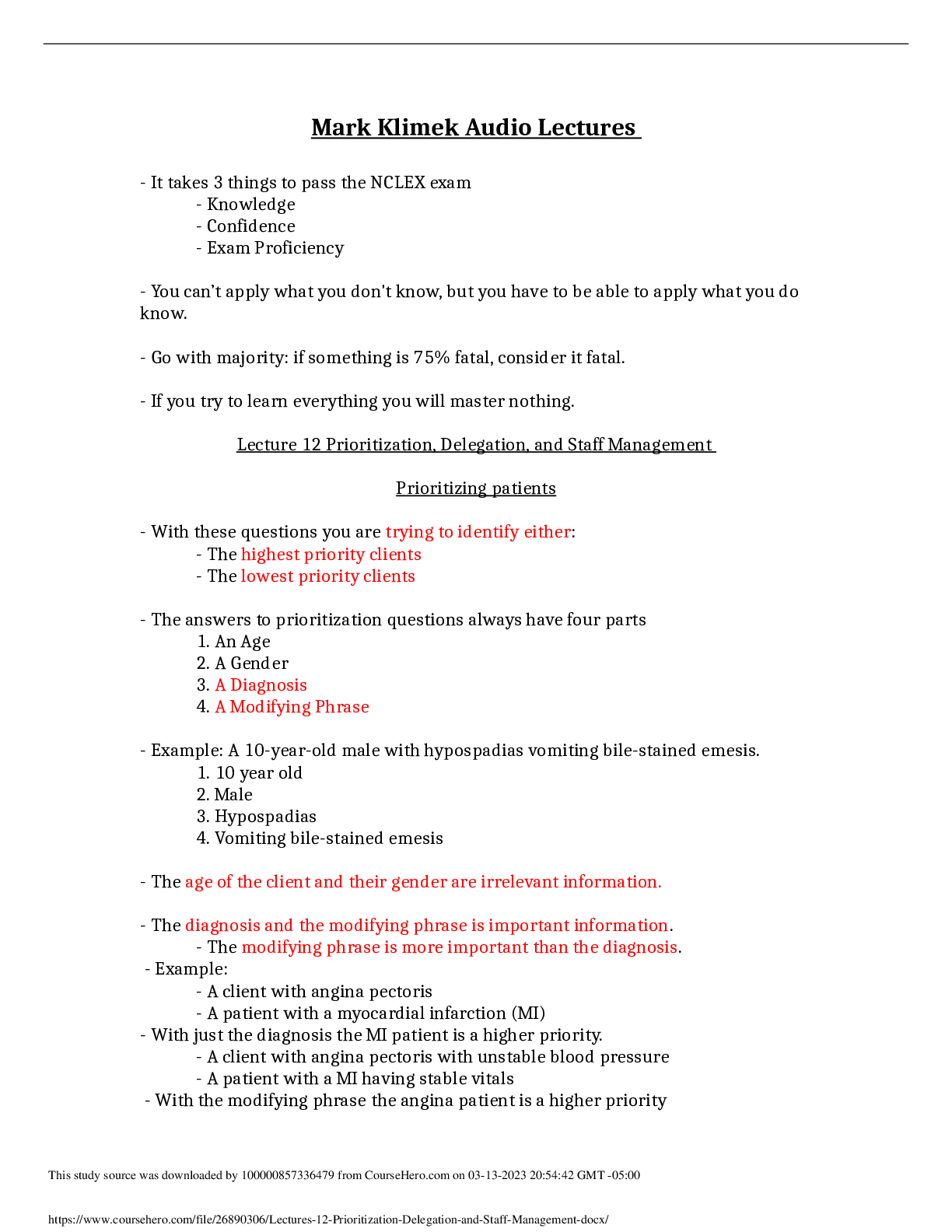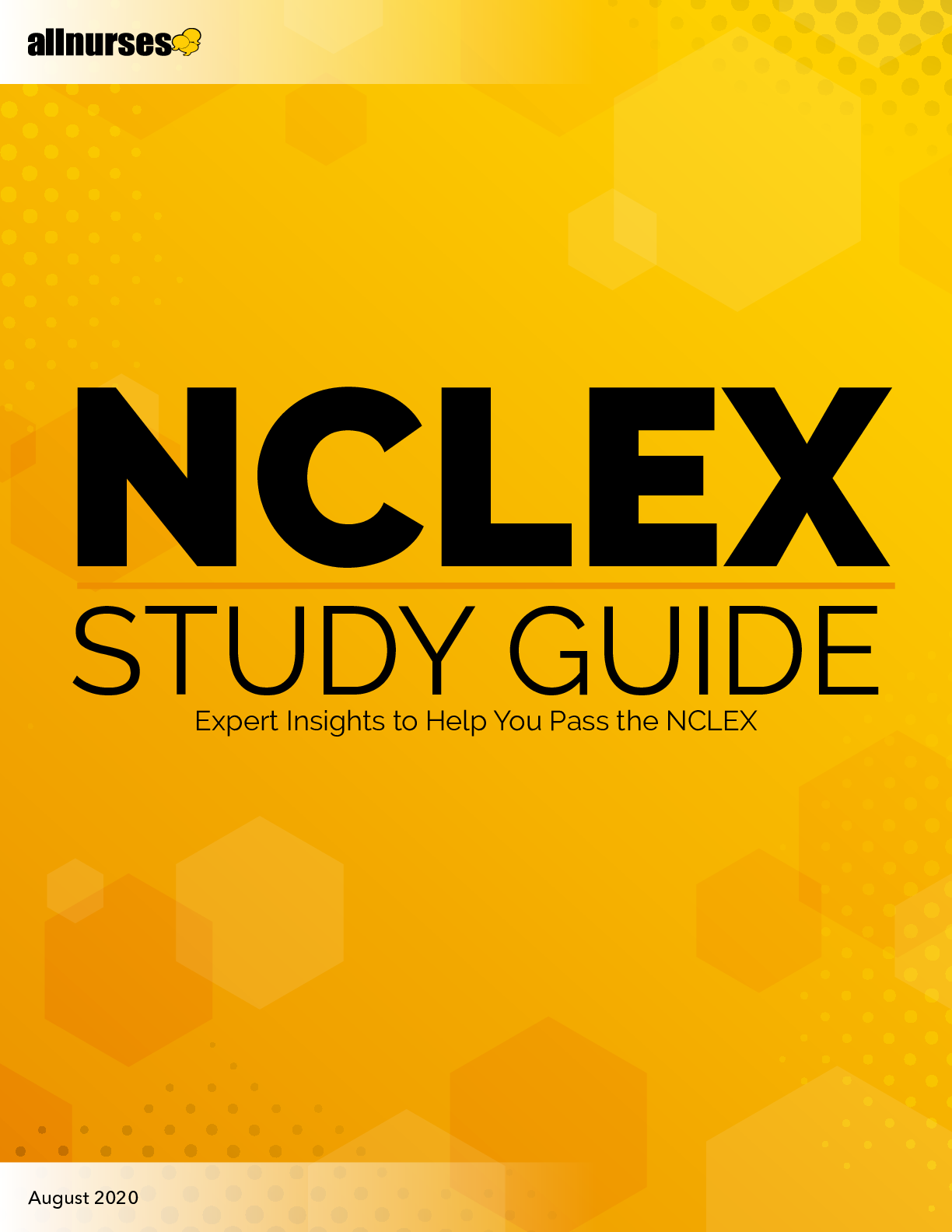MARK KLIMEK LECTURES MATERNITY AND OB 2021 COMPLETE LECTURES
Document Content and Description Below
Maternity and OB Lecture Pregnancy - Know how to calculate due date. o First day of the last menstrual period + 7 days – 3 months o June 10 -15th due date would be March 17th - Ideal total ... weight gain for pregnancy = week of gestation - 9 o At week 12 (1st trimester) = 3lbs normal - Fundal height o Fundus not palpable until week 12 (end of the first trimester) Client is the priority o Fundus is at the umbilicus at 20-22 weeks of gestation (end of the second trimester) o Fundus is above the umbilicus – third trimester - Quickening (baby kicking) occurs 16-20 weeks - Positive o Fetal skeleton on xray o Fetal presence on ultrasound o Auscultation of a fetal heart (can hear it around 8-12 weeks) When would u first: 8 weeks When would u most likely (midpoint): 10 weeks When should u auscultate (endpoint): 12 weeks o When the examiner palpates fetal movements - Probable/presumptive o All urine and blood tests o Positive preg. Tests o Chadwick’s sign Cervical color change to cyanosis o Goodell sign Softening of cervix o Hegar’s sign Softening of the lower uterine segment - Pts should come once a month until week 28 - At week 28, she should come in once every 2 weeks until week 36 - Come once every week until delivery or week 42 - Hbg level : 12-16 (will fall to 11 in first trimester) - How to treat morning sickness o Dry carbohydrates before u get out of bed o Bagels, dry cereal and dry toast - How to treat urinary continence o 1 st and third trimester problem o Baby is up higher in the abdomen in the second trimester no urinary continence in second trimester. o Void every 2 hours all the way until 6 weeks after delivery - Difficulty breathing o 2 nd and 3rd trimester problem o Teach tripod position. - Back pain o 2 nd and 3rd trimester problem o Pelvic tilt exercises (tilt pelvis forward, Labour and Delivery - The true and most valid sign of labor o The onset of regular progressive contractions - Dilation o Opening of cervix (0-10cm) - Effacement o Thinning of the cervix o Goes from thick and 0cm closed and she ends labor in fully dilated to 10cm dilated and 100% effaced. - Station is the relation of the fetal presenting heart to mom’s ischial spine (narrowest part of the pelvis) o Negative station: baby’s presenting part is above the ischial spine. o Positive station: baby’s presenting part is below the ischial spine. (already made it through) - Engagement in station 0 o The presenting part is at the ischial spine - Fetal lie o The relationship between the spine of the mother and the spine of the baby. o Vertical lie (good) parallel o Perpendicular (bad) transverse lie - Presentation o Part of the body that enters the birth canal first o ROA/LOA Right occiput anterior Left occiput anterior - 4 stages of labor o Stage 1: Labor has 3 phases Latent active, transition o Stage 2: Delivery of baby o Stage 3: Delivery of placenta o Stage 4: Recovery Last 2 hours - Purpose of uterine contractions in the first stage o Dilate and efface the cervix - In the second stage o Push the baby out - Third stage o Push placenta - Fourth stage o Contract uterus to stop bleeding - Post-partum begins 2 hours delivery of placenta - #1 priority in the second phase of labor o Pain management - Priority in the second stage o Clearing the baby’s airways - Extreme important action to be taken in the third phase o Check the dilation, check breathing - Nursing action for o Check for the vessels in the placenta - The labor chart - Latent phase o Dilate: 0-6cm o Contraction freq is 5-30mins apart o Last 15-30s o Intensity is mild - Active o Dilation 5-7cm o Freq is 3-5 mins o Last 30-60s o Intensity is moderate - Transition o Dilation is 8-10cm o Freq is 2-3 mins o Duration is 60-90s o Intensity is strong - Signs of uterine tetany/Uterine hyperstimulation o Contractions should not be longer than 90s and closer than 2 mins - Assessment of contractions o Freq is the beginning of one contraction to beginning of the next o Duration is beginning to end of one contraction o Intensity; palpate with one hand over the fundus with the pads of the finger - Complications of labor o 18 complications Painful back labor (LOPosterior /ROPosterior ) Position her in a knee chest position then push into her sacrum Low priority Prolapse cord Emergency Cord is the presenting part (head will press on the cord) High priority Push the head back up, position in knee chest - Interventions for other complications (Maternal hypotension, toxemia, o LION o Turn on left side o Increase IV o Oxygenation o Notify physician - Pain meds in labor o Do not administer pain med to woman in labor if the baby is likely to be born when the med peaks. Fetal Monitoring Patterns - 7 monitoring patterns (look at the first letter, starts with L: do LION) o Low fetal HR (<110) Do LION (left side lying, IV, O2 and notify MD) BAD! o High fetal HR (>160) Baby is fine but take mom’s temperature o Low baseline variability (stable VS) Fetal HR stays same BAD! Do LION (left side lying, IV, O2 and notify MD) o High baseline variability Fetal HR always changing Document it Good! o Late deceleration Fetal HR slows down near the end or after a contraction. BAD! Do LION (left side lying, IV, O2 and notify MD) o Early deceleration Fetal HR slows down before or at the beginning of contractions. Normal Document o Variable Decelerations VERY BAD! Happens in prolapse cord Push then position. - Always check fetal HR Delivery of the Baby - First deliver the head - Suction the mouth and then nose - Check for the nuchal cord (around the neck) - Deliver the shoulders and body. - Baby must have an ID badge on before leaving the delivery area - First stage: placenta o Make sure it’s all there o Check for a 3-vessel cord (2 arteries and 1 vein) AVA - Recovery o First 2 hrs after delivery of placenta. o VS q15 min (s/s of shock low BP, HR rate goes up, pale cold and clammy) o Assess fundus. Q15min If boggy, massage it If displaced, catharize. o Check the perineal pads every 15min Check amount of bleeding (heavy = 100% saturated pad in 15 mins or less) o Roll her over: check bleeding underneath her every 15min Post-partum Assessment - Assessed q4-8h - B – breast, U- Uterine fundus, L- Lochia (rubra -red , serosa - pink, alba- white), E – Episiotomy, HHematocrit/Hgb, E- Extremity check, A- Affect, D- Discomfort o Fundus should be firm, midline o Fundal height = day postpartum o Look for thrombophlebitis Bilateral calf circumference Variations in the Newborn - Caput Succedeaum o CS – crosses suture and caput symmetrical - Cephal hematoma o Doesn’t cross o Bleeding OB Medications - Terbutaline o Stops labor and speeds up HR of the mother - Magnesium sulfate o Stop uterine contractions o Lowers HR, BP, less reflexes, low RR, LOC go down (we want to see 12 resps and +2 reflexes) o Monitor reflexes and respirations (if below 12, lower the dose, if reflexes are +1, slow down the dose) - Oxytoxics o Stimulate labor o Pertocin Cause uterine hyperstimulation (longer than 90s, and closer than 2 mins) o Mertergy Causes high BP - Fetal lung maturing meds o Beta methasone Given to the mother Given IM Given before baby is born o Serventa (Surfactant) Given to the baby Given transtracheally Given after baby is born Medication Facts - Humulin 70/30 o Mix of insulin of N and R - Needle that have a 5 = for subcut injections - Needles that have a 1 = for IM injections - Heparin o Given iV/ SUBCUT o Works immediately o Cannot be given for longer than 3 weeks o Antidote to overdose: Protamine sulfate o PTT monitors heparin o Can be given to pregnant woman - Coumadin o Given PO o Takes a few days to a week to work o U can take it forever o Antidote: Vitamin K o PT/INR monitors coumadin o CANNOT be given to pregnant women - K wasting diuretic o End with X or diaril, semides o Lasix - K-sparing diuretic o Spiralactone - Muscle relaxants o 2 side effects Fatigue and muscle weakness o 3 teachings Don’t drink, Don’t drive Don’t operate heavy machinery Paediatrics - 4 stages of Piaget’s theory of cognitive development o 0-2 (sensory motor thinking) Think about the present Teach them while they doing it or as you do it Teach them what you are doing and just tell them, don’t use play o 3-6 years (preoperational) Preschooler Fantasy oriented, illogical Understand the past and future Can teach them shortly before Teach them what you are going to do Learn through play o 7-11 (concrete operational) Rule-oriented Cannot abstract, There is only one way to do things Teach them days ahead Teach them what ur going to do plus skills Use age appropriate reading and demonstration o 12-15 Can abstract and think cause and effect Teach like an adult Psych Drugs - All psych drugs cause low BP and weight gain (protac cause weight loss) Typical - First Generation Anti-Psychotics (Phenothiazines) - Only reduce symptoms, do not cure the disease - In small doses, they are anti-emetics - Side effects o A – Anticholinergic (dry mouth) o B- Blurred vision N. diagnoses: Risk for injury o C- Constipation o D- Drowsiness o E- EPS (extra pyramidal symptoms) Cogentin is given to treat EPS o F – Photosentivity o AG- Agranulocytosis - #1 nursing diagnosis: Risk for injury (safety issues) - Decanoate o It is a long acting Tricyclic Antidepressants - SSNRI o Selective - NSRI o Non-selective serotonin reuptake inhibitors - Mood elevators - Side effects o A- Anticholinergic o B- Blurred vision N. diagnoses: Risk for injury o C- Constipation o D – Drowsiness o E- Euphoria - Taken for 2-4 weeks for efficiency, does not work right away. Benzodiazepines - Minor tranquilizers - Ends with “zep” - Can be used pre-op sedative, Muscle relaxants, alcohol withdrawals, - Works right away and cannot be taken for more than 2-4 weeks - Side effects o A- Anticholinergic o B- Blurred vision o C- Constipation o D – Drowsiness - #1 nursing diagnoses o Risk for injury/safety concerns MAOIs - Antidepressants - MaR, NaR, PaR - Side effects o A- Anticholinergic o B- Blurred vision o C- Constipation o D – Drowsiness - To prevent hypertensive crisis o Pt must avoid all foods containing tyramine such as: Salad bar (Bananas, avocado/guacamole, and raisins) Liver, kidney, brain No preserved meats (smoked) No cheese except cottage and mozzarella and yogourt No alcohol or chocolate, caffeine, soy sauce - They should not take OTC meds Lithium - Used for bipolar disorder - Used for decreasing mania - Side effects o 3Ps - Peeing, Pooping and paresthesia (numbness and tingling) Give the drug still, and don’t call doctor - Toxic effects o Metallic taste o Tremors o Severe diarrhea - Interventions o Increase fluids o Monitor sodium levels (competitive binders) Low Na Li becomes toxic High Na Li won’t work Prozac - SSRI - Side effects o A- Anticholinergic o B- Blurred vision N. diagnoses: Risk for injury o C- Constipation o D – Drowsiness o E- Euphoria - It causes insomnia o Give the drug before noon, NOT at bedtime - For adolescent and young adults, when changing the dose: o Watch for suicidal ideation Sertraline (Zoloft) - SSRI - Causes insomnia but can be given at bedtime - Notorious for interfering with the p460 system in the liver - Other drugs do not get metabolized when taking this drug o Lower the dose of other - If taking st john wort and Zoloft, serotonin syndrome occurs o Sweating o Apprehension (an impending sense of doom) o Dizziness and headache - Watch for increased bleeding when pt is on coumadin Haldol - Atypical - Side effects: o B- Blurred vision N. diagnoses: Risk for injury o C- Constipation o D- Drowsiness o E- EPS (extra pyramidal symptoms) Cogentin is given to treat EPS o F – Photosentivity o AG- Agranulocytosis - NMS o Neuroleptic malignant syndrome o Tremors, anxiety, fever o Medical emergency - To differentiate between EPS vs NMS o Take a temperature first (temp > 102F) Clozapine - Prototype (original first 2nd atypical antipsychotic) - New major tranquilizers - Used to treat severe schizophrenia - Does not have the side effect ABCDEF ( or very minor side effects) - Disadvantage o Causes agranulocytosis Monitor WBC Geodon - Prolongs the QT interval and can cause sudden cardiac arrest - Should not be used with ppl with heart problems. Labs Values A - Low priority B – Medium priority (watch closely) C – High priority (critical, must do something about it) D – Highest priority Creatinine - Best indicator of kidney function - 0.6 to 1.2 (same as lithium) - Abnormal is low priority PT/INR - 2.0 to 3.0 - > 4 = C (high priority) o Hold o Assess focused area o Prepare to give o Call MD Potassium - 3.5 – 5.3 - <3.5 = C (high priority) - 5.4 -5.9 = C o Hold K+ o Assess heart o Kayealate and D5W and regular insulin o Call MD - >or 6 = D (highest priority) o Stay with the pt while other nurses get ECG pH - 7.35 to 7.45 - pH of 6 = D o assess VS o call MD stat BUN - 8-25 - If elevated: o Assess for dehydration Hemoglobin - 12-18 - 8-11 = B o Assess for malnutrition, bleeding - <8 = C o Assess for bleeding o Prepare to administer blood o Call MD Bicarbonate - 22 – 26 - Abnormal = A CO2 - 35-45 - In the 50s = C o Assess respiratory status o Teach pursed lip breathing - In the 60s = D o One of the criteria for resp. failure o Stay with pt o Assess resp. status o Prepare for intubation and ventilation o Call RT and MD [Show More]
Last updated: 3 years ago
Preview 1 out of 18 pages

Buy this document to get the full access instantly
Instant Download Access after purchase
Buy NowInstant download
We Accept:

Also available in bundle (1)
Click Below to Access Bundle(s)

MARK KLIMEK LECTURE Combinatios 2021 Graded A
MARK KLIMEK LECTURES
By Hannington 4 years ago
$21
4
Reviews( 0 )
$11.00
Can't find what you want? Try our AI powered Search
Document information
Connected school, study & course
About the document
Uploaded On
Jun 14, 2021
Number of pages
18
Written in
All
Additional information
This document has been written for:
Uploaded
Jun 14, 2021
Downloads
0
Views
177


.png)



 NCLEX.png)
BURN’S PEDIATRIC PRIMARY CARE NCLEX.png)
BURN’S PEDIATRIC PRIMARY CARE NCLEX.png)


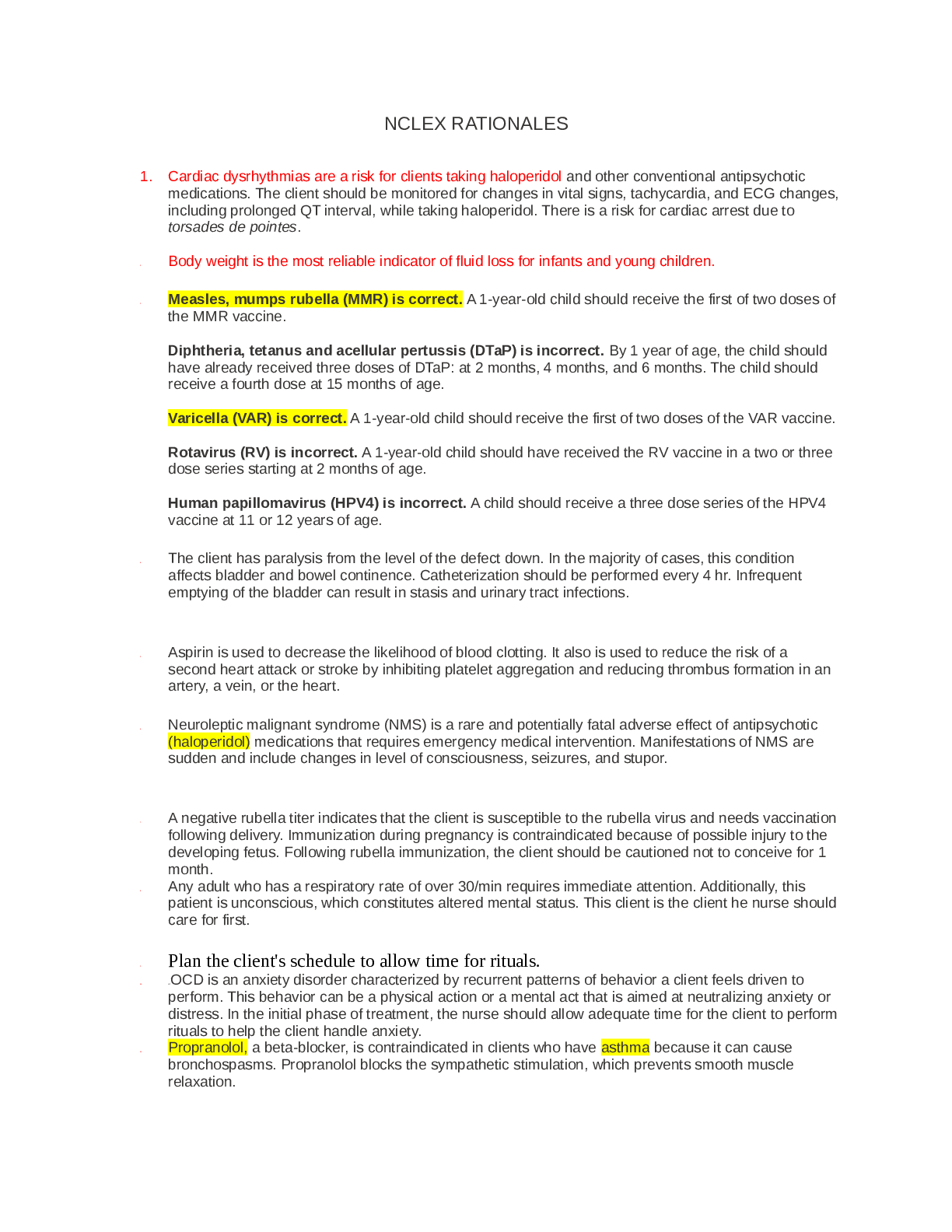


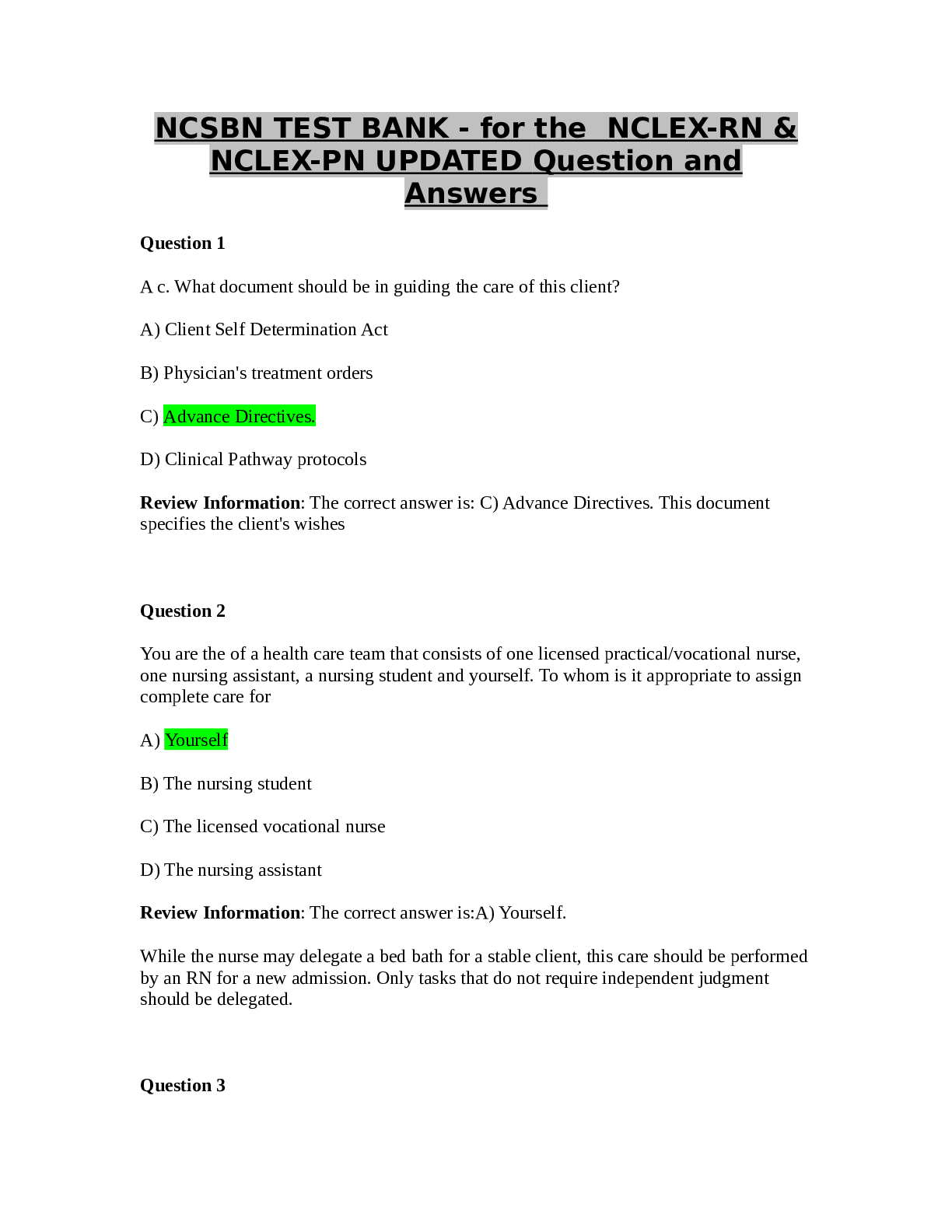
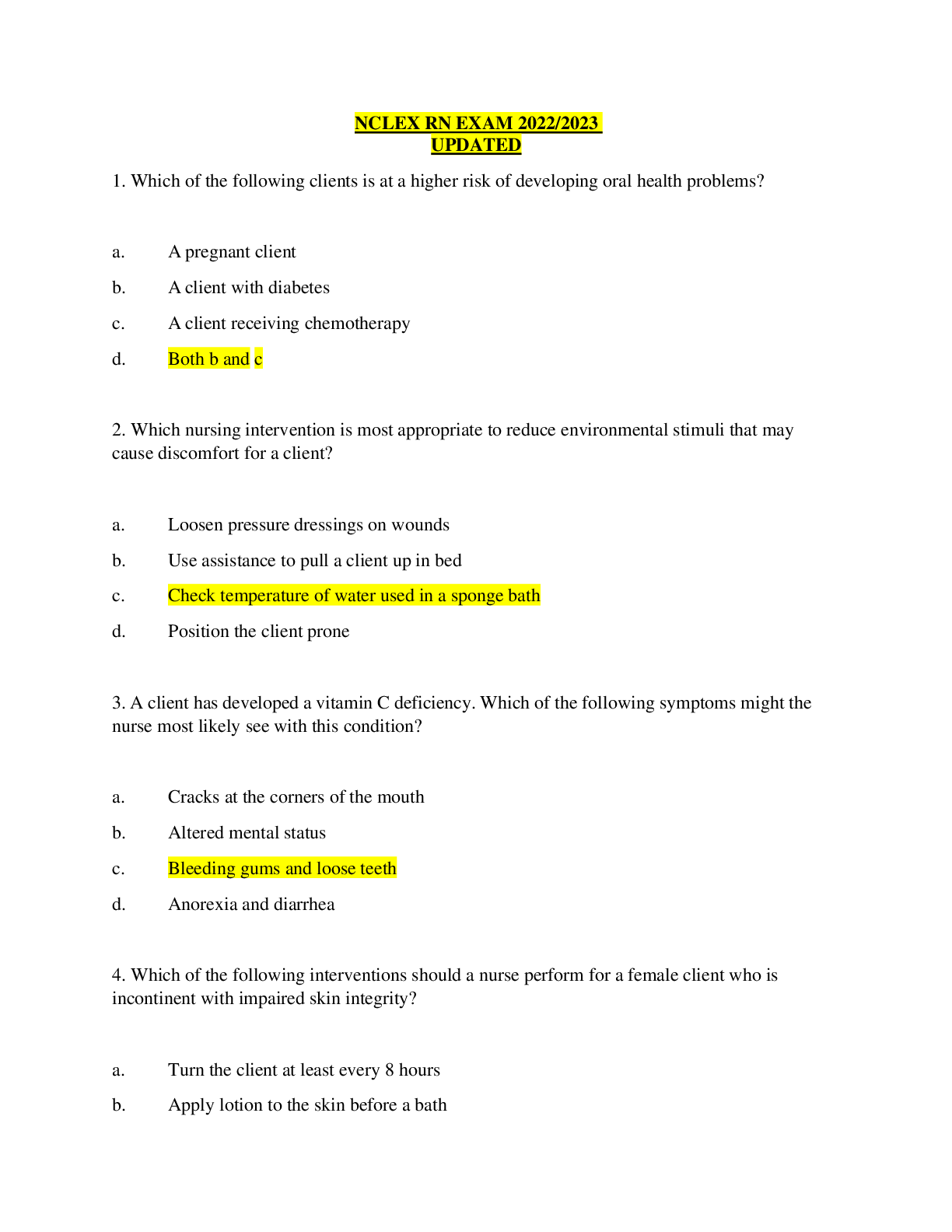
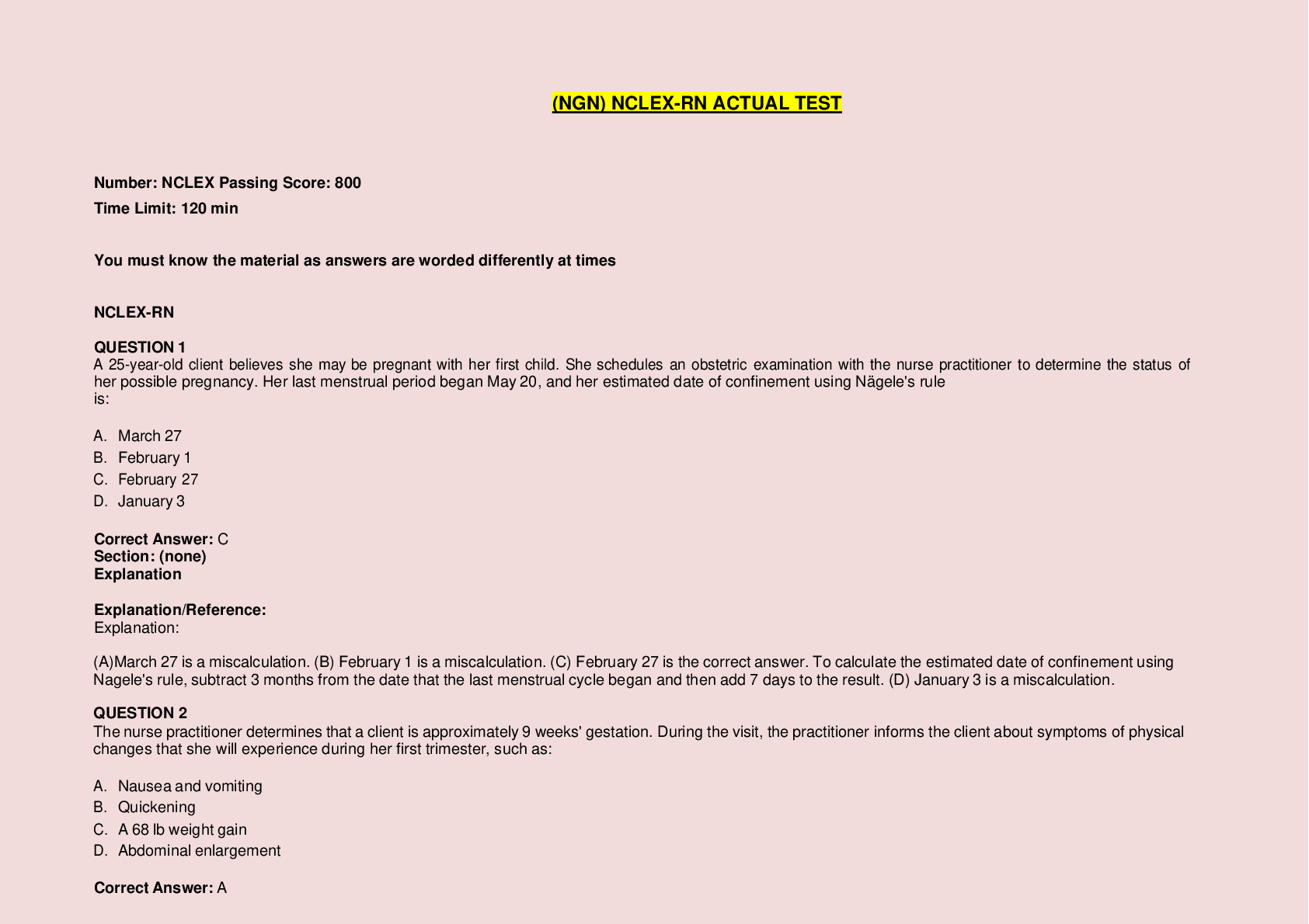
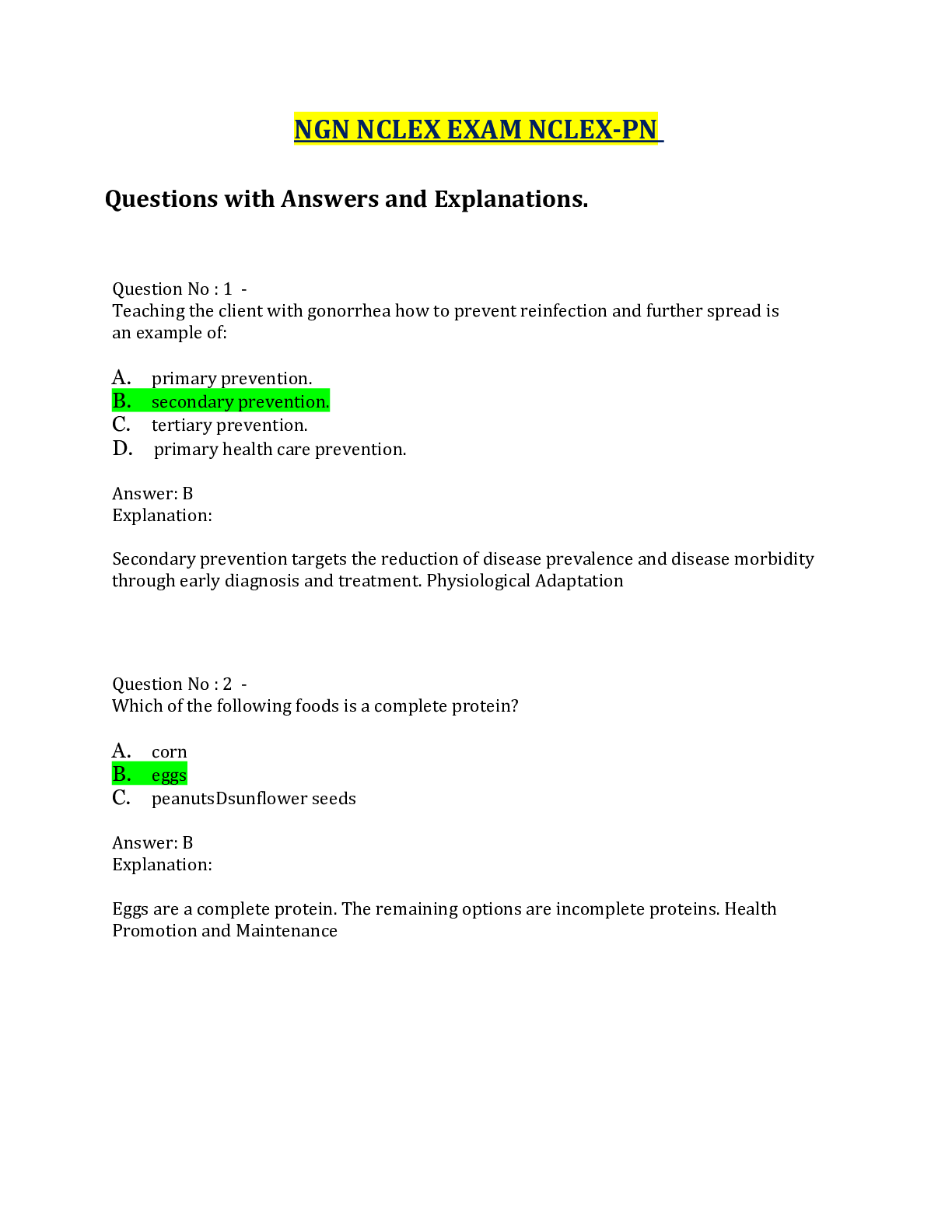

 JN21.png)
